Heads up – Massive Sports Tech Holiday Deals List is Live!!! The Garmin Fenix 8 is $250 off (even the Fenix 8 Pro is $100 off!), the Apple Watch Ultra 3 is on sale, the Garmin inReach Mini 2 is $249, the GoPro Hero 13 Black, DJI NEO, and a ton of other brands/deals, including Wahoo, Oura, Whoop, Polar, Samsung, Google, and more than 100 sports tech deals here!
I’m DC RAINMAKER…

I swim, bike and run. Then, I come here and write about my adventures. It’s as simple as that. Most of the time. If you’re new around these parts, here’s the long version of my story.

You'll support the site, and get ad-free DCR! Plus, you'll be more awesome. Click above for all the details. Oh, and you can sign-up for the newsletter here!
Here’s how to save!
Wanna save some cash and support the site? These companies help support the site! With Backcountry.com or Competitive Cyclist with either the coupon code DCRAINMAKER for first time users saving 15% on applicable products.
You can also pick-up tons of gear at REI via these links, which is a long-time supporter as well:Alternatively, for everything else on the planet, simply buy your goods from Amazon via the link below and I get a tiny bit back as an Amazon Associate. No cost to you, easy as pie!
You can use the above link for any Amazon country and it (should) automatically redirect to your local Amazon site.
While I don't partner with many companies, there's a few that I love, and support the site. Full details!

Want to compare the features of each product, down to the nitty-gritty? No problem, the product comparison data is constantly updated with new products and new features added to old products!

Wanna create comparison chart graphs just like I do for GPS, heart rate, power meters and more? No problem, here's the platform I use - you can too!

Think my written reviews are deep? You should check out my videos. I take things to a whole new level of interactive depth!

Smart Trainers Buyers Guide: Looking at a smart trainer this winter? I cover all the units to buy (and avoid) for indoor training. The good, the bad, and the ugly.
-
Check out my weekly podcast - with DesFit, which is packed with both gadget and non-gadget goodness!

Get all your awesome DC Rainmaker gear here!
FAQ’s
I have built an extensive list of my most frequently asked questions. Below are the most popular.
- Do you have a privacy policy posted?
- Why haven’t you yet released a review for XYZ product you mentioned months ago?
- Will you test our product before release?
- Are you willing to review or test beta products?
- Which trainer should I buy?
- Which GPS watch should I buy?
- I’m headed to Paris – what do you recommend for training or sightseeing?
- I’m headed to Washington DC – what do you recommend for training?
- I’m from out of the country and will be visiting the US, what’s the best triathlon shop in city XYZ?
- What kind of camera do you use?
-
5 Easy Steps To The Site
In Depth Product Reviews
You probably stumbled upon here looking for a review of a sports gadget. If you’re trying to decide which unit to buy – check out my in-depth reviews section. Some reviews are over 60 pages long when printed out, with hundreds of photos! I aim to leave no stone unturned.
Read My Sports Gadget Recommendations.
Here’s my most recent GPS watch guide here, and cycling GPS computers here. Plus there are smart trainers here, all in these guides cover almost every category of sports gadgets out there. Looking for the equipment I use day-to-day? I also just put together my complete ‘Gear I Use’ equipment list, from swim to bike to run and everything in between (plus a few extra things). And to compliment that, here’s The Girl’s (my wife’s) list. Enjoy, and thanks for stopping by!
Have some fun in the travel section.
I travel a fair bit, both for work and for fun. Here’s a bunch of random trip reports and daily trip-logs that I’ve put together and posted. I’ve sorted it all by world geography, in an attempt to make it easy to figure out where I’ve been.
My Photography Gear: The Cameras/Drones/Action Cams I Use Daily
The most common question I receive outside of the “what’s the best GPS watch for me” variant, are photography-esq based. So in efforts to combat the amount of emails I need to sort through on a daily basis, I’ve complied this “My Photography Gear” post for your curious minds (including drones & action cams!)! It’s a nice break from the day-to-day sports-tech talk, and I hope you get something out of it!
The Swim/Bike/Run Gear I Use List
Many readers stumble into my website in search of information on the latest and greatest sports tech products. But at the end of the day, you might just be wondering “What does Ray use when not testing new products?”. So here is the most up to date list of products I like and fit the bill for me and my training needs best! DC Rainmaker 2024 swim, bike, run, and general gear list. But wait, are you a female and feel like these things might not apply to you? If that’s the case (but certainly not saying my choices aren’t good for women), and you just want to see a different gear junkies “picks”, check out The Girl’s Gear Guide too.


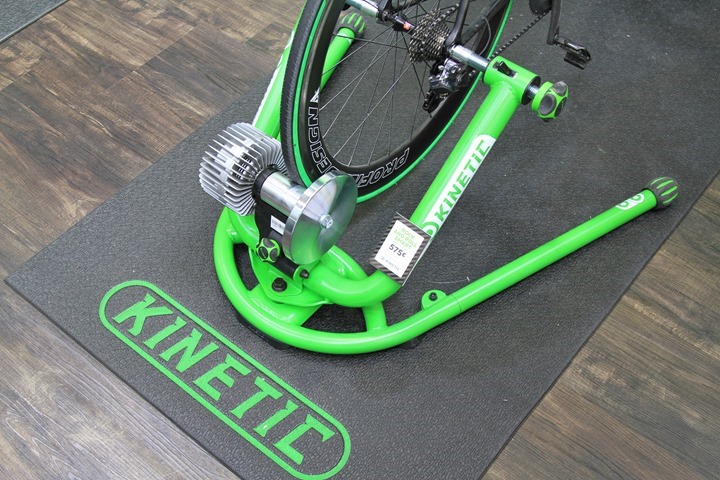
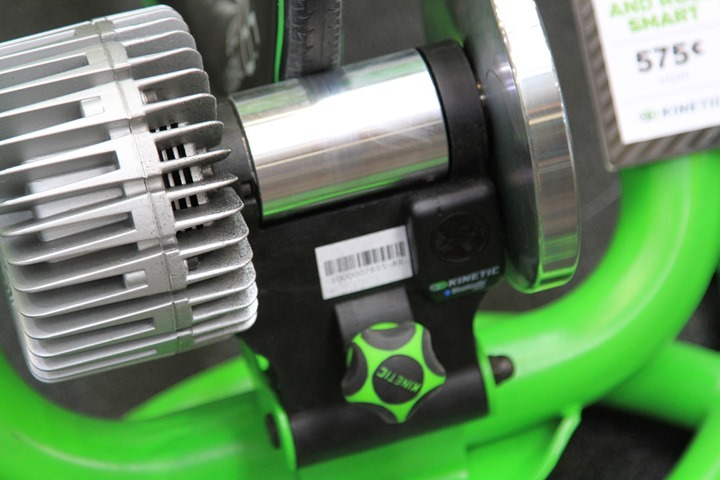
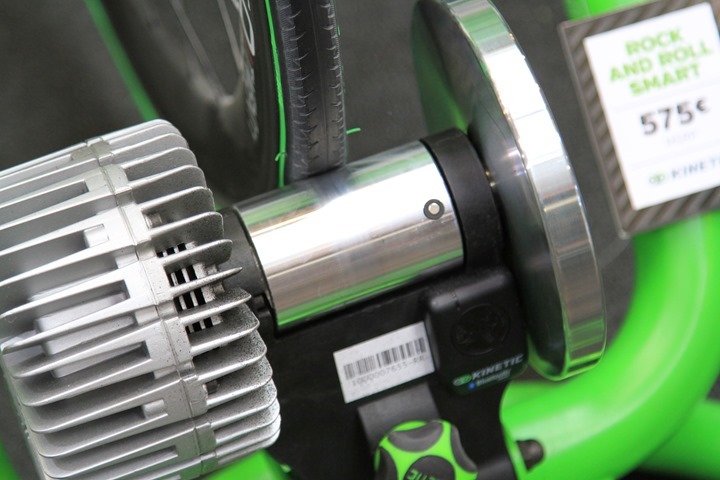
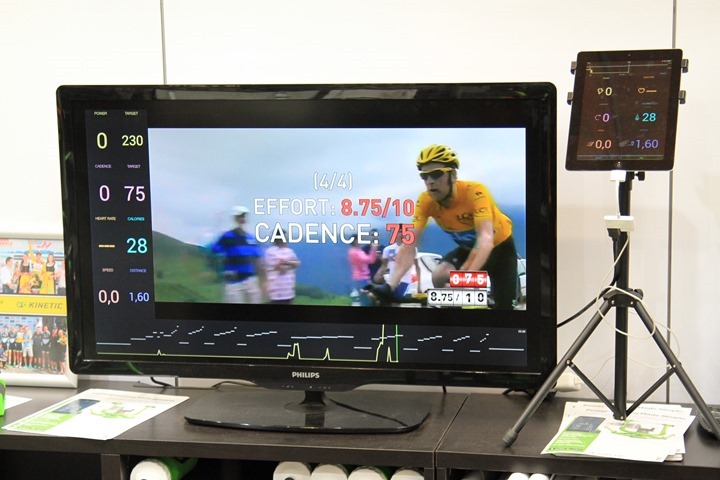
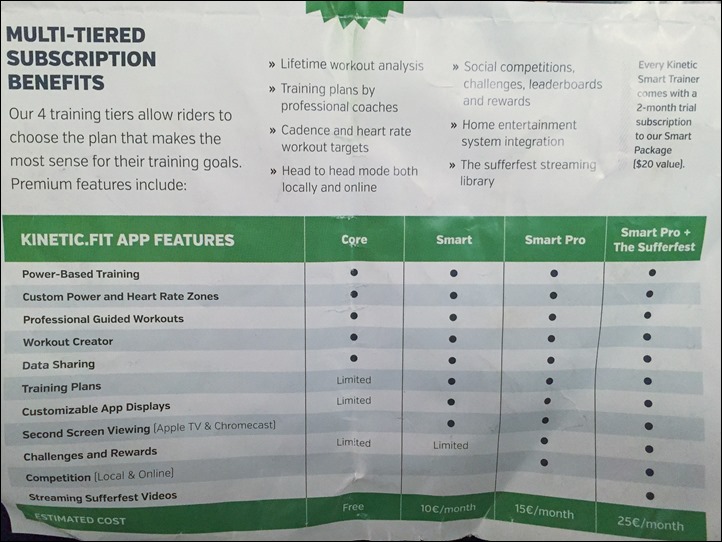






















Love my Road machine and have had it for over 2 years. One of the best 20% off purchases I made from REI and it is a great basic trainer. The new add on to me doesn’t make much sense and a little disappointed it does not include ANT+ as well.
“This differs from 3rd party apps that can determine power estimations (i.e. virtual power) based on known power curves. See, with inRide it properly calibrates it during each ride as it has enough data to do so.”
Ray, I’m confused on this bit. I’d expect inRide to be better than virtual power in that the resistance unit is spinning faster than the bicycle wheel (therefore higher data rate), but I wouldn’t expect the steady-state “power” values to be any more accurate. Are you saying that they would be?
As usual, thank you so much for all of your work!
3rd party apps (ours included) are using generic curve built by using some bike with some particular tire inflated to some particular pressure. KK can do a bit better by doing spindown test and therefore adjusting for variability in rolling resistance due to tire type/pressure factors.
I personally think however the the value of it is close to zilch. People who really care about power would just buy power meter (even used one) and be done with the subject using proper approach instead of this voodoo magic with power curves/pods/etc.
As someone who uses the inride pod (which I got for $70 with HRs strap off Amazon), and has also used TrainerRoad’s virtual power, I can say that the inride power meter readings react a lot faster, i.e. if you stop pedaling the power almost immediately drops to zero, as opposed to ramping down that is seem with virtual power. I believe Ray’s review of the pod showed that with spin down calibration it’s a pretty accurate power meter as well, taking out the annoying variability you get with TR’s VR when, like me, you have to dismantle and rebuild your training set-up for each session (no room to have it set up all the time).
A nice bonus as well is that it measures cadence and wheel speed, meaning that all the metrics that you’d want from your training session (power, speed, cadence) can be derived from the trainer itself without needing extra hardware on the bike, which is especially good if more than one person uses the Trainer with different bikes. Although the cadence is “virtual” I can attest from running it on a bike with a dedicated cadence meter that it seems pretty dead on.
Including the inride pod seems like a win-win to me, even for a small price increase, although I’m surprised they didn’t upgrade it to dual ANT+/BLE, honestly.
A general question about this type of trainer: Why does the surface where the tire makes contact always have such a small diameter? Designed to slip. Why can’t we have something that is at least as large in diameter as rollers? I don’t have a trainer yet, but I’ve tried this type and been disappointed. Am I missing something?
With a trainer like these, the tire is locked in place laterally – so it’s not going left or right. Meaning, it could be 1″ wide and that’d be enough (but would of course make locking it in place finicky).
Larger diameter of the roller would decrease roller’s RPM and increase the torque correspondingly. It is technically harder/more expensive to deal with low RPM higher torque situation than with high RPM low torque.
It is still possible though. Look at our Lynx trainer. It has 6″ roller diameter.
Ray, sorry to interfere but he is talking diameter, not width
Yup, brain-fart on my part. Overdue for lunch and some caffine…
I guess I wasn’t clear – the diameter, not the width. I’m complaining about the rear wheel slipping in the trainer. Doesn’t your rear wheel slip in this kind of trainer when you stand on the pedals and apply a lot of force? My rear wheel never slips when I’m out on the road, except maybe, on ice. If the diameter of the artificial road (where the rear tire contacts the trainer) were larger, you would have more tire contact area and you wouldn’t need to dial in so much tension with the adjusting knob on the bottom. (But then again, maybe it was just a problem with the trainer that I tried.)
Oops, spent too much time trying to rephrase while others did a better job. :-)
Any idea if the new app will be capable of getting data from an ANT+ HRM?
Not sure, it would require them to maintain support for the Wahoo adapter (on iOS), and/or the ANT+ stack on Android.
I love the KK trainers from a ride feel and durability standpoint, but it really rubs me the wrong way for them to call this a smart trainer. That term has sort of emerged as a way of referring to electronically braked trainers (Kickr, CT, Tacx, etc) that have some means for external software to simulate resistance. What they have is smarter than before, but I’m pretty sure someone at Kurt knows they are appropriating and watering down this term. It sort of feels like when Walmart figures out that people like to buy organic and finds the lowest standard possible to still use the term.
I agree. This isn’t a new product is it? It is just a road machine with built in inride?
I have a kk road and will probably look at zwift or trainer road and virtual power until such time I can afford a kickr. Now that is a smart trainer.
Agreed 100% – it’s a misappropriation of the term “smart” as understood by consumers and the current market. I see a little bit of this from TACX, too – eg their Satori Smart has braking which is controlled by a lever, not electronically.
Generally agree with the mis-use of the term. However, I don’t mind the Satori so much, because it’s doing dual transmitting on both ANT+ and BLE with the open variants of both. Kinetic is doing neither.
It would be nice if they could come up with something that can added to Kinetic designs currently on the market. I don’t want to “throw away” my Kinetic just for this feature.
That’s what inRIDE is – an accessory for their existing trainers. This just bundles it.
As someone who has a KK Road and uses TR I cannot see what this offers me at all.
if I was to get a KickR I would see that as a definite upgarde and improvement but not this.
Where does the $25 a month for Sufferfest come from – an extra $10 every month to use Sufferfest – be much easier to buy one a month
Good review though
Your Tacx blog post link is dead, fyi.
IMHO, it is truly unfortunate that Kinetic decided to go down the software route. If, instead, they had applied their engineering resources to 1. developing a truly smart braking flywheel-based trainer and 2. opening up with ANT+/FE-C to control that braking, I think they would have had a hit on their hands. For months, I had been flipping back and forth between a Vortex Smart for smart braking/openness and a KK for hardware quality. If bought online, the two are similarly priced. At first, I was leaning towards the KK for an unbreakable unit. But then I thought that technology’s going to advance and most likely, I will replace whatever I buy now in another 5-6 years. So I placed an order for the Vortex Smart for around USD320. Maybe the next time around, if Kinetic adds the right features to their unit, I will switch to KK.
That’s right. I have both trainers and are using them with TR. Now I prefer to ride with Vortex instead of KK.
TLDR – Kinetic should have remained to their original principles and built a quality unit with features the market wants, rather than jump on the “let’s make more money by introducing our own proprietary subscription-based software service” bandwagon.
Well said Ken
Ho Hum – given that the in-ride pod basically eats batteries, crashes when running spin down calibration, and won’t reliably work with Trainer Road there certainly isn’t any reason to bother.
I am new to biking and triathlons, and this will be my first winter season. Someone recommended the new Kinetic Smart trainer for indoor training. Do you know if it will sync up with my Garmin 920XT, or am I better off with a less expensive trainer in conjunction with my Garmin watch and cadence sensor. Thanks!
Any idea when the net .fit platform will come online?
At Eurobike they stated that by Interbike ’15 it would be running…That was a month ago.
The manual that comes with the Road Warrior Smart shows that the app works on Android. Which is untrue at this time, there is no android app. They also failed to mention that the new Bluetooth Smart is actually a closed api, which companies have to pay to access. I’ve emailed them about this, they stated that is would degrade accuracy if it was open…or something like that.
Which begs the question: Stages and PowerTap have ‘open’ bluetooth and are considered accurate, why can’t my trainer do the same?
Anyone else tired of buying products before they are completed?
“I’m not sure if I’d trade my $10/month of TrainerRoad for $10/month of Kinetic Smart. That’d be a hard sell for me..”
Looking at the details, I would never change my TrainerRoad to the new Kinetic service either. Actually, I have been using TR since they started and thus I am not paying even that $10/month, but even if the price was the same, the new service does not look half as good as TR.
The good thing is that Kinetic is upgrading the existing Kinetic InRide v1 pods to v2 with no charge. The old one had serious reliability issues. I have read TR will support the v2 pod in the future.
Great article! I just wish I’d read it before buying one of these. I understood all the terminology except for TDK. At the risk of sounding daft, what is TDK?
DC,
How would you recommend using inRide with zwift? Zwift now supports bluetooth in beta, but I want to ensure that my inride unit is calibrated correctly before using zwfit. Would I need to calibrate on the zwift app before each ride?
If you had to choose a trainer around $400 that is compatible with Zwift, which one would you choose? Looking to pick one up soon. Thanks!
Check out my trainer recommendations guide here: link to dcrainmaker.com
Everything on the list these days is compatible with Zwift.
Awesome. Thank you sir, appreciate the prompt response!